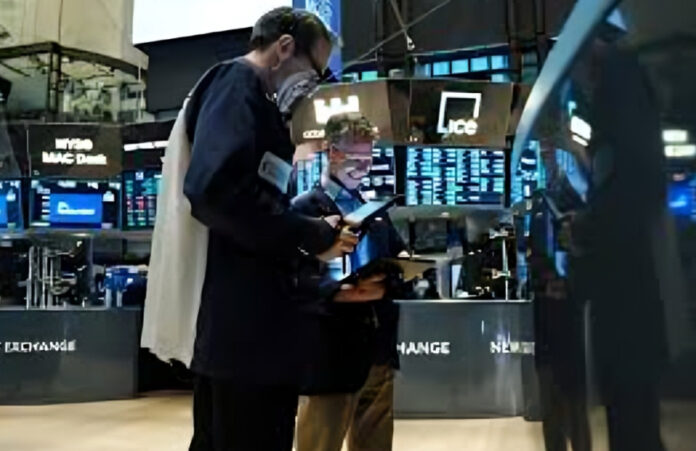The smiles on Wall Street quickly turned to frowns on Friday as a wave of disappointing bank earnings rolled through financial markets like a cold front. Major stock indexes endured a stormy session, with the S&P 500 and Dow Jones Industrial Average both suffering steep losses that left them poised for weekly declines.
The squalls first formed around JPMorgan Chase, the nation’s largest bank. JPMorgan reported profits that exceeded expectations, but warned that income from interest payments in the months ahead may disappoint analysts. That cloudy forecast cast a pall over the entire banking sector, triggering a 3.3% plunge in the S&P 500 banking index to a near one-month low.
JPMorgan shares skidded 5.9% in the rout as investors reacted to the caution around pivotal lending income at a time when the Federal Reserve continues raising interest rates to tamp down stubbornly high inflation. Rival Citigroup fared little better, shedding 2.8% after its first quarter profits shrank.
“The banks are getting hit because they just can’t seem to catch a break,” said Carly Riverson, chief market strategist at National Securities Corporation. “There was optimism that rising rates would boost their lending businesses, but the outlook keeps getting murkier on that front.”
While the banking woes instigated Friday’s storm of selling, they were far from the only dark clouds overhead. A relentless rotation out of previously high-flying technology and growth stocks also battered the major indexes.
Market leaders like Nvidia, Tesla and Meta Platforms all declined over 1% amid rising concerns that this year’s blistering rally in big tech may have become overheated. Chipmakers AMD and Intel were among the worst hit, plunging around 4% following reports that Chinese telecom firms were instructed to phase out key foreign chips by 2027.
“Markets have climbed a huge wall of worries this year, so investors are understandably getting jittery about finding new reasons to keep pushing stocks higher from here,” said Keith Lerner, co-chief investment officer at Truist Advisory Services. “The hot air is deflating from some of the frothier areas of the market, and that’s putting downward pressure on the indexes.”
Feverish selling drove the CNN Fear & Greed Index, a gauge of market sentiment, to its highest level since last October as investors grew unnerved. The downbeat bank forecasts and Chinese chip concerns compounded existing anxieties around scorching hot inflation data this week that raised odds of further Fed rate hikes.
Markets now see around a 56% chance of another rate increase by July and remain split on whether the central bank will need to cut rates before year-end to soften an economic downturn. Central bank officials offered little clarity on Friday, with some voices calling for a couple of rate cuts this year while others suggested the fight against inflation isn’t over.
“The Fed pivot parlor game is in full swing, and investors just can’t seem to get a clear answer on what the safe word is for getting off this rate hike thrill ride,” said Victoria Kern, chief investment officer at Kern Wealth Management. “No one wants to get caught offsides if the Fed ends up having to take even more aggressive actions down the road.”
The murky outlook kept markets on a volatile churn throughout Friday’s session, with the Dow Jones Industrial Average dropping as much as 389 points at its intraday nadir before paring losses. The S&P 500 tumbled over 1% while the tech-heavy Nasdaq Composite fared worst of the major averages, sliding 1.2% as investors fled high-growth corners of the market.
Only the energy sector managed to buck the downtrend, eking out a 0.4% gain that tracked higher crude prices amid escalating tensions in the Middle East. But the green shoot did little to ease broader investor angst about the state of the US economy and corporate profits in the face of stringent Fed policy.
“This felt like an overdue bout of bearish capitulation hitting markets after weeks of relentless grinding higher,” said Kern. “Whether it marks a bigger downturn or just a breather is still to be seen, but either way it serves as a wake-up call about how treacherous the path ahead could remain.”






















